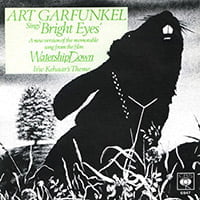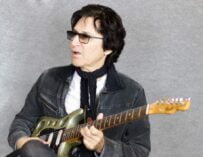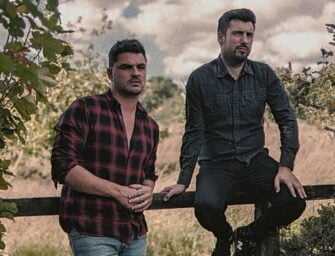The Wombles songwriter recollects how a song about death became the theme to ‘Watership Down’ and a No 1 hit
In a career spanning over 45 years, Mike Batt has had great success as a songwriter, producer, performer, conductor and composer. After clocking up eight hit singles and four gold albums with The Wombles, he went on to write a string of hits for the likes of Elkie Brooks, Cliff Richard, David Essex and Alvin Stardust, as well as working with some of the world’s leading orchestras.
One of his most well–known compositions – though far fewer people realise he wrote it – is Art Garfunkel’s international No 1 single Bright Eyes, which was used in the soundtrack of the 1978 British animated film Watership Down. The story of a group of rabbits that risk their lives to find a safe new home became an instant classic, and Bright Eyes was generally considered the theme of the film and the subsequent TV series.
More than three decades on, Mike thinks back to the conception of the song and, in particular, its lyric, which meant ruminating on the mystery of death…

Released: 19 January 1979
Artist: Art Garfunkel
Label: Columbia
Songwriter: Mike Batt
Producer: Mike Batt
UK chart position: 1
US chart position: –
Misc: Bright Eyes was the UK’s biggest-selling single of 1979
“In the case of Bright Eyes, I was asked by the film director to write a song about death. It was as simple as that, and I came away from the meeting thinking, ‘Bloody hell, how do you do that?’ How do you write about death, without it being mawkish, or even funny? Then I started to muse on the idea of death as the most important thing we think about. What happens afterwards? Do we die? Carry on? Go around again? Everyone thinks different things and so I made the song into a question. That’s why it starts: ‘Is this a kind of dream?/Floating out on the tide/Following the river of death downstream/Is it a dream?’.
“After several days of wandering about the house with a furrowed brow, I sat down and, quite emotionally, wrote the song in about an hour. I was sitting at the piano and the lyrics and the tune came pretty much at the same time. Bright Eyes just came to me as being a person – it’s an animal in the film, but they represent people, so it’s still made in human terms. When you see a dead person, their eyes don’t do anything: there’s nothing there. With a live person, there’s a sparkle, something behind the eyes. How can that suddenly go? That was where I got, ‘How can a light that burns so brightly, suddenly burn so pale?’
“I always find that, if I’m writing a song that’s going to move people, I become moved myself when I’m writing it. You find yourself shedding the odd tear. I know that when I feel like that, I’ve written something that will be effective and powerful with other people.”
“Usually I’ll write a chorus first – I’ll think of a subject and a title, then write the chorus and feel my way back through the verse. Then the difficult thing of writing the second verse. But with Bright Eyes, ‘Is it a kind of dream?’ came first because that was the question. Then, rippling around an A-minor chord, it just came out and the ‘bright eyes’ part of it would’ve come after. The song’s meaning is expressed in the verse and the wrapping of it into a melodic, memorable, emotional message came second – chronologically, I mean.
“When the producers came to my house to hear the song, they said, ‘We love it, had you anyone in mind to sing it?’ And I said, ‘I’d love it if Art Garfunkel could sing it, but of course that won’t happen, so here’s a list of other people.’ Colin Blunstone of The Zombies was number two on the list, and I was number 10! But they just said, ‘We’ll see if we can get him.’ So they sent my demo to Garfunkel through someone senior at CBS and within a day he’d said yes… and within a week he was sitting in my living room routining the song with me. It was great.”
EXPERT OPINION by James Linderman
“Some songwriters threaten to bludgeon any intruder that interrupts their writing; some invite the whole family into the room. Know which one of these writers you are, and inform your friends and relations accordingly.”










![Songwriting Credits… best new music playlist [September 2023]](https://www.songwritingmagazine.co.uk/wp-content/uploads/songwriting-credits-september-2023-335x256.jpg)






























Related Articles